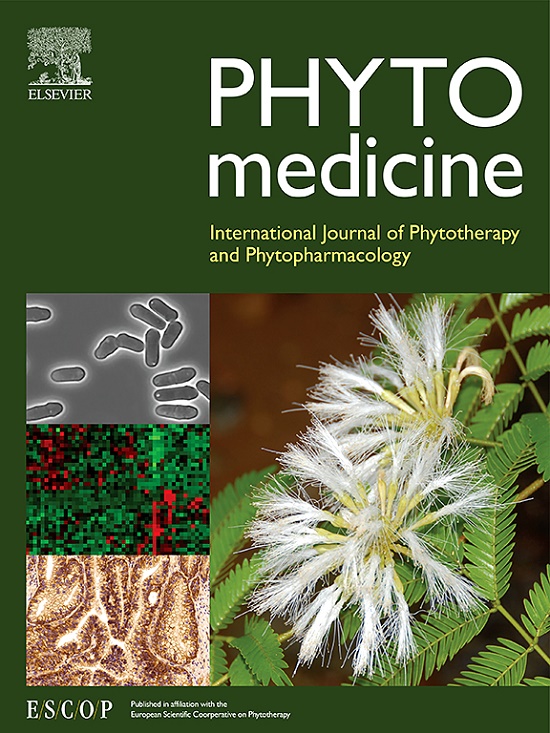Astragali Radix-Curcumae Rhizoma normalizes tumor blood vessels by HIF-1α to anti-tumor metastasis in colon cancer
IF 6.7
1区 医学
Q1 CHEMISTRY, MEDICINAL
引用次数: 0
Abstract
Background
Abnormal tumor blood vessels can significantly promote the malignant progression of tumors, prompting researchers to focus on drugs that normalize these vessels for clinical treatment. The combination of the Qi-tonifying drug Astragali Radix and the blood-activating drug Curcumae Rhizoma, referred to as AC, exhibited significant anti-tumor metastasis effects. However, the association between the anti-tumor metastasis effect of AC and its potential role in regulating tumor vascular remodeling warrants further exploration.
Purpose
This study aimed to elucidate the mechanism through which AC induces tumor blood vessel normalization in colon cancer (CC).
Methods
The potential active components of AC were identified through UPLC-MS/MS. An orthotopic transplantation model of CC was established in BALB/c mice using the CT26-Lucifer cell line, and the effects of AC were evaluated using IVIS imaging, hematoxylin and eosin (H&E) staining, and immunohistochemistry. Network pharmacology and molecular biology analyses were employed to identify the potential direct targets of AC. Subsequently, RT-PCR and Western blotting techniques were utilized to validate the findings obtained from network pharmacology. Furthermore, ELISA and other methodologies were used to investigate glycolysis-related indicators, along with immunofluorescence technology to demonstrate changes in vascular leakage and perfusion characteristics associated with blood vessel normalization.
Results
We identified HIF-1α as a potential direct target of AC. This interaction influences the glycolytic processes in both tumor cells and tumor-associated endothelial cells (TECs) by directly binding to HIF-1α and modulating its nuclear translocation, thereby determining the integrity of TEC junctions. Mechanistically, AC directly regulates the key enzyme PFKFB3 in glycolysis by modulating HIF-1α expression and inhibiting its nuclear translocation. This action reduces tumor glycolytic flux, decreases the internalization of VE-cad, and influences the expression of downstream matrix metalloproteinases (MMPs), thereby strengthening the adherens and tight junctions between TECs and restoring vascular integrity.
Conclusion
This study presents novel findings that AC can regulate glycolysis through the inhibition of HIF-1α nuclear translocation, thereby promoting the normalization of tumor blood vessels and effectively inhibiting tumor metastasis. These results suggested that AC may serve as an effective therapeutic agent for normalizing tumor blood vessels.

求助全文
约1分钟内获得全文
求助全文
来源期刊

Phytomedicine
医学-药学
CiteScore
10.30
自引率
5.10%
发文量
670
审稿时长
91 days
期刊介绍:
Phytomedicine is a therapy-oriented journal that publishes innovative studies on the efficacy, safety, quality, and mechanisms of action of specified plant extracts, phytopharmaceuticals, and their isolated constituents. This includes clinical, pharmacological, pharmacokinetic, and toxicological studies of herbal medicinal products, preparations, and purified compounds with defined and consistent quality, ensuring reproducible pharmacological activity. Founded in 1994, Phytomedicine aims to focus and stimulate research in this field and establish internationally accepted scientific standards for pharmacological studies, proof of clinical efficacy, and safety of phytomedicines.
 求助内容:
求助内容: 应助结果提醒方式:
应助结果提醒方式:


